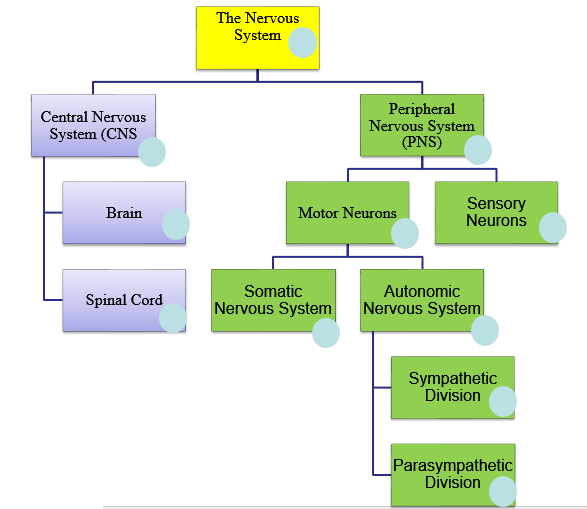
The system of cells, tissues, and organs that regulates the body's responses to internal and external stimuli.
is that part of the nervous system that consists of the brain and spinal cord.
The nerves in _______connect the central nervous system (CNS) to sensory organs (such as the eye and ear), other organs of the body, muscles, blood vessels and glands
the part of the central nervous system enclosed in the cranium of humans and other vertebrates, consisting of a soft, convoluted mass of gray and white matter and serving to control and coordinate the mental and physical actions.
The thick, whitish cord of nerve tissue that extends from the medulla oblongata down through the spinal column and from which the spinal nerves branch off to various parts of the body.
A neuron that conveys impulses from the central nervous system to a muscle, gland, or other effector tissue.
a nerve cell that conducts impulses from the periphery of the body to the central nervous system
the section of the nervous system responsible for sensation and control of the skeletal muscles
the system of nerves and ganglia that innervates the blood vessels, heart, smooth muscles, viscera, and glands and controls their involuntary functions, consisting of sympathetic and parasympathetic portions
The part of the autonomic nervous system originating in the thoracic and lumbar regions of the spinal cord that in general inhibits or opposes the physiological effects of the parasympathetic nervous system, as in tending to reduce digestive secretions, speed up the heart, and contract blood vessels.
The part of the autonomic nervous system originating in the brain stem and the lower part of the spinal cord that, in general, inhibits or opposes the physiological effects of the sympathetic nervous system, as in tending to stimulate digestive secretions, slow the heart, constrict the pupils, and dilate blood vessels.